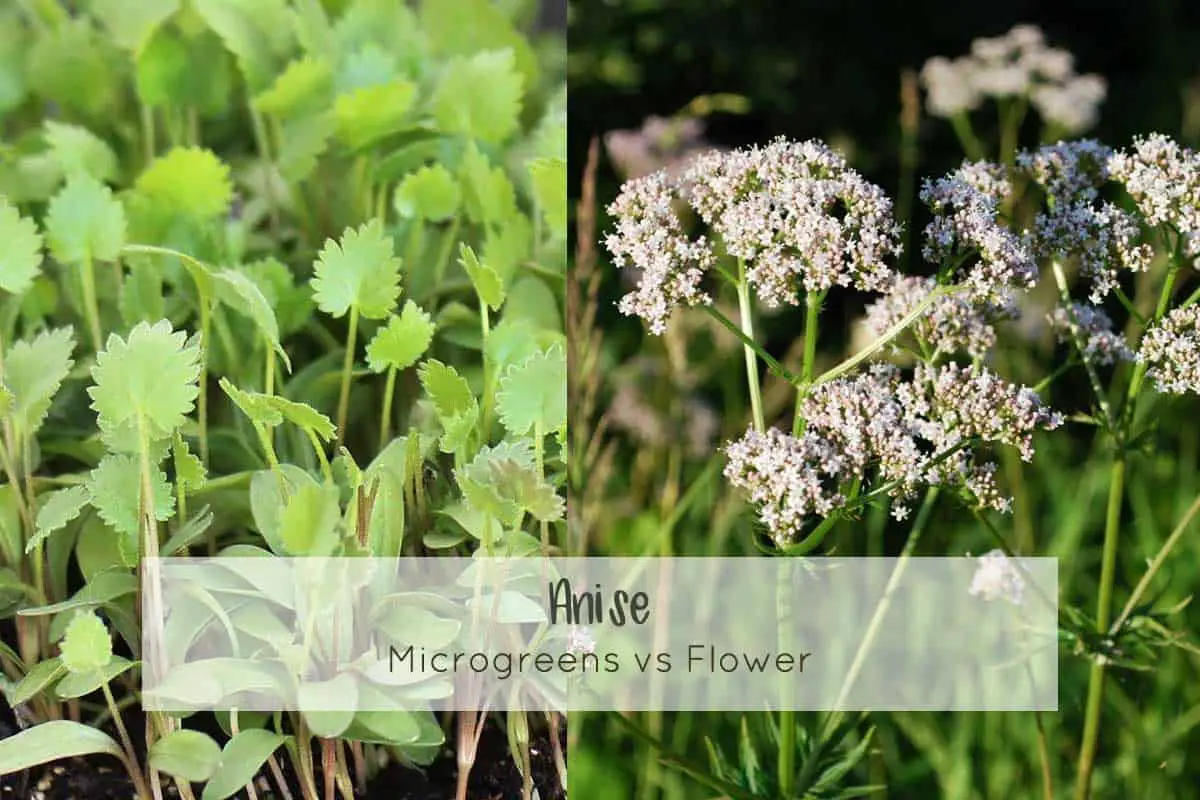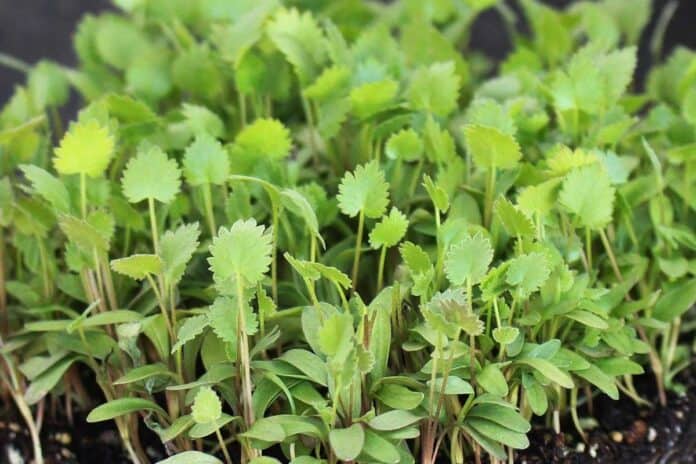Anise is a herb with a flavor reminiscent of licorice. It has this strong taste and is widely used to flavor pastries, and liqueurs, but also for cooking! Now you can grow this herb as microgreens and enjoy it only after just 20 days!
WHAT ARE ANISE MICROGREENS?
Anise microgreens are very different from the way anise is traditionally cultivated. Most of us are more familiar with the anise seeds or the full-grown plant. As microgreens, you will be enjoying the anise as a mini version, with bright green and somewhat spiky leaves.
Anise is easy to grow, but you need some patience as it will take around 2-3 weeks before they have reached their full microgreen stage.
| Growing period | 16-20+ days |
| Flavor | Liqorice flavor |
| Growing difficulty | Medium |
| Buy seeds | Anise seeds from True Leaf Market |
DESCRIPTION
Anise is a popular herb known to have origins in the Middle East. It is part of the family Apiaceae and is commonly used for its seeds. Today anise is an ingredient used widely in candy, desserts, and drinks.

As a full-grown plant, the anise grows like a bush with green stems and beautiful white flowers, with a pleasant fragrance. Patience is needed when growing anise from seeds to plants. Anise requires a long growing season of at least 120 days, and it can take years from planting the seed to having a full-grown bush in your garden. Anise plants are typically harvested when the flowers go to seed. These seeds are often used as a medicinal herb and for cooking!
When growing anise seeds into microgreens, you will not get the same results as growing the full-grown plant. Instead, you will be able to enjoy a delightful small veggie with the same distinct fragrant licorice flavor. And that in just 2-3 weeks!
GENERAL NUTRITION & BENEFITS
Anise microgreens are nothing short of nutrition and are known for their curative benefits. They are rich in nutrients, particularly iron and manganese.
The anise is low in calories but high in minerals. Anise is known for its health benefits, and according to research, it shows antibacterial and anti-inflammatory properties.
Vitamins: Vitamin A, C
Other nutrients: Iron, Calcium, Manganese, Magnesium, Phosphorus, Potassium, Zinc
RELATED: The Most Nutritious Microgreens to Grow and Eat
HOW TO GROW ANISE MICROGREENS
Anise microgreens are easy to grow, but can still be a bit more challenging than many other varieties. It requires a bit longer time to grow than many types and an additional layer of growing medium. After 2-3 weeks, you will have nutritious microgreen with a distinctive flavor to enjoy!
| Growing timeline (estimated) | |
|---|---|
| Presoak | No |
| Preferred medium | Soil or coconut coir |
| Avg. seed weight (10/20 tray) | 9 gram |
| Germination period (blackout) | Day 1-7 |
| Growth time (sunlight) | Day 8-15 |
| Harvest | Day 16-20+ |
Planting & Germination
Anise Microgreens seeds do not require soaking before seeding. Fill up your tray or container with a layer of the growing medium of your choice. They grow well in soil or coconut coir. Flatten it with your hands and sprinkle the seeds evenly across the surface. The anise microgreens benefit from having another layer of growing medium on top. Spread a thin layer evenly so you can no longer see the seeds. This extra layer will help the seeds germinate and remove the seed hulls.
Learn more about coconut coir and how to use it for growing microgreens.
After the planting, you give them a good mist of water without oversoaking. Anise microgreens are sensitive to too much water. To initiate the germination process, place the trays in a blackout. You do this by covering the trays with another top tray/dome or what else you have to ensure that there is no light coming through.
Growing
The Anise microgreens will start to germinate after approximately 5-7 days. When you can see that they have germinated, you can remove the top tray and bring them out in the light.
Throughout the growing period, ensure to watch as they grow and give them water from one to two times per day, depending on the conditions. The growing medium should always be moist, but not soaked.
Harvest
The Anise microgreens are ready for harvest when they are a bit more than an inch in height, the stems have grown tall, and you can see the leaves have emerged. To harvest, you can use a sharp knife, or scissors and cut the stems close to the soil level.
CULINARY GUIDING
Anise microgreens pairs well with seafood and meat! Because of its distinct flavor, you can use it sparingly.
For your next salad, adding the anise microgreens will spice it up, and impress even the finicky tasters. Adding some as a garnish on the main course will place you in line with top chefs!
More than cooking, anise is what we associate with candy. So why not, for your next dessert, sprinkle some anise microgreens on top of your licorice ice cream, and you are guaranteed to make it a success! Showing off your microgreens in a creative way, cannot go wrong!
In summary, anise microgreens are more distinct than many other varieties. With its characteristic aromatic flavor, you may find it more difficult how to use it. Be bold and give it a try!
Enjoy your Anise microgreens!


